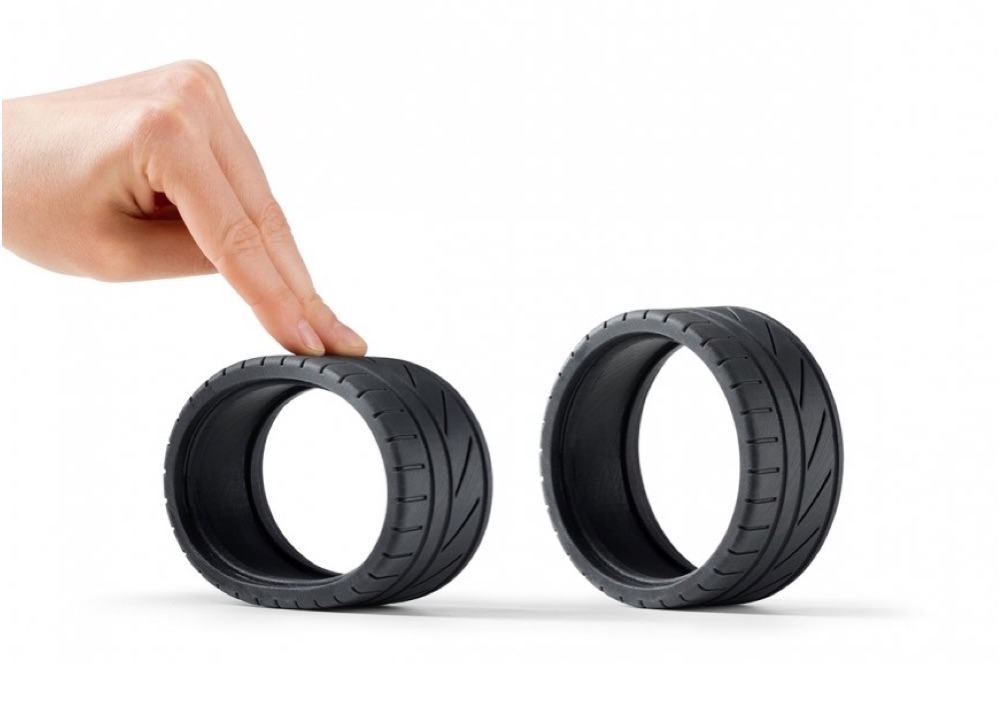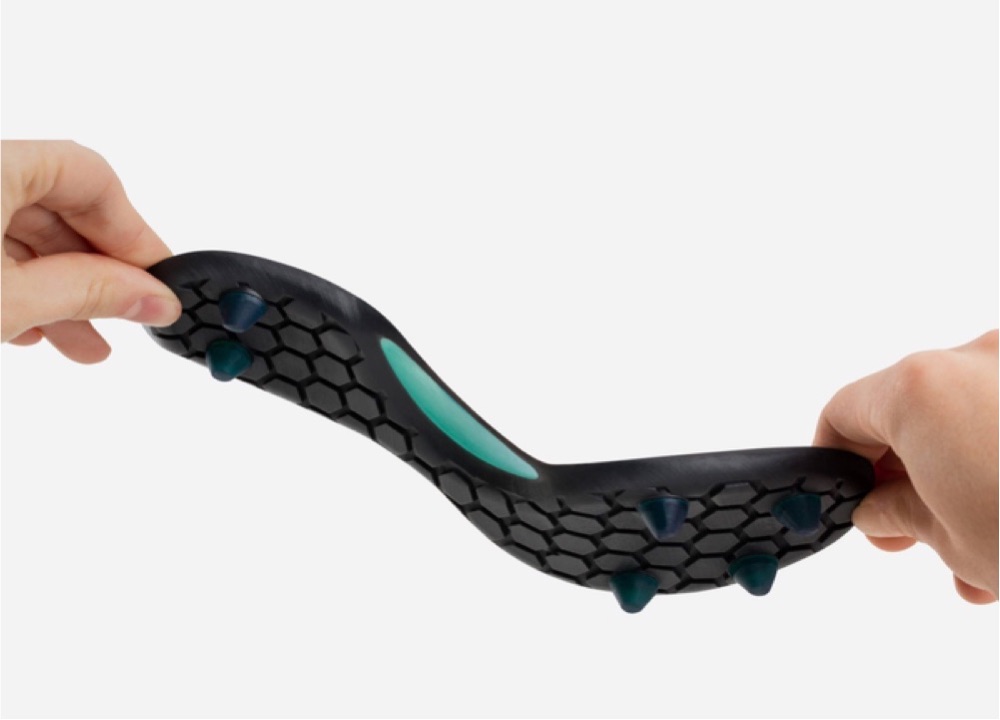3D Printed Shapes
3D printing, also known as additive manufacturing, has revolutionized the way we think about creating objects.
.svg)
silicone and thermoplastic elastomer are useful in applications where flexibility and durability for industrial products and consumers are required.


Modern advances in 3D printing and 3D printed organic material has made additive manufacturing the ideal solution to produce small to medium quantities of rubber-like parts.
Additive manufacturing has traditionally been the domain of casting and injection moulding but 3D printing is the best way to make rubber parts in as few as 2 days.
Start your project with a quote or read to learn about how to create a 3D rubber sculpture - from a 3D printer.
Rubber parts are produced using traditional techniques which require injection moulding.
It is highly expensive for producing small batches due to the high cost of preparing the moulds. However, once it passes through vulcanization the material cannot return to its fluid state.
By heating and burning vulcanized rubber you can easily destroy it. However, just like Silicone, manufacturing involves the use of injected moulding techniques.
It's very expensive in small quantities. The production of rubber differs from traditional techniques. It can be hard to shape rubber in very high temps.

3D print technology has elevated design from a low to a high level. Is three-dimensional printing actually feasible? We want to know if printing rubber can be done.
Why? Unfortunately, there are several rubber options you may use, which provide the strength and flexibility you need.
But there are other rubber alternatives to 3D printed rubber that are more flexible resin and stronger than the ones you need to use to make your own.
A process where the materials are added layer by layer into their three-dimensional form.

Resins are more useful when manufacturing parts such as gaskets custom grips, stamps or wearables that requires detailed detail.
The only issue they had with this resin was that they are typically designed specifically not for all printers.
If you're going to print with flexible plastics you'll first need to consider their compatibility with their printing devices.
Resins can also be used for producing parts and functional prototypes that have the same quality if you had 3D printing rubber.
After printing the complete parts or functional prototype, a resin would feel like rubber and normally compress and bounce back to its original form after printing the part.

Thermoplastic elastomers are really a form of plastic designed to mimic the characteristics that make rubber so valuable.
TPE combine flexibility with strength, bending and compressing the same as rubbers. These 3D printing materials allow engineering to see which qualities of rubber it wants to simulate at the desired levels.
Rubber-like materials are suitable materials for producing seals, soft-grip handles and multi-material prototypes needing shock absorption.
For example, a rubber material can be used for making soft grips, seals and other parts designed for multi-material assemblies such as TPE.
When printing with flexible filaments success and failure are mainly dependent on printer setup and software calibration of your printer. Flexible filaments are used in many things that demand the same feeling or friction as rubber produces.
The thinner material the harder its usage becomes. The recommended print speed as a 3D printer is 20-40 mm per second. These printing speeds for most flexible materials in 3D printers are not all specialized extruders.
You can promise to use these filaments that you get the same quality. Feel when you print plastic but remember there are some conditions.
Rubber 3D printing is the newest technology that replicates the traditional moulding process. This exciting new development in additive manufacturing allows you to take any design and print it as a flexible rubber object.
It's the best way to make rubber parts - fast. The precision of FDM (fused deposition modelling)3D printing leaves no detail behind.
The rubber 3D printed models you can make are smooth and very detailed. You can choose from a range of colours including white, black, blue, green, yellow and red - or mix multiple colours to get your own unique colour combinations.
A thermoplastic elastomer form of ethylene TPE is the most resustained printed material in a printed environment. These synthetic materials exhibit properties that are quickly damaged due to other factors. In addition to hardness, you can determine temperature resistance with thermoplastic polyurethane (TPU) filaments.
TPU was ranked as the easiest to print of the various flexible materials you may encounter on the market. The term “flexible filament” refers to the rigid materials made by a number of different companies or manufacturers. These materials vary in flexibility from supplier to manufacturer.
Resins are better choices for those looking to prototype high quality and precise flexible parts like custom grips, stamps gaskets and wearables. All of such substances can be used by designers to create a perfect complementing product to a set of assemblies. Unfortunately, resins are limited exclusively to certain types and printers.
The flexible resin fills the prime slot amongst other alternatives to 3D printers as a substitute for rubber. If you print them your materials will almost certainly be treated like you would with rubber materials.
Generally, it is easy to split up plants into three major groups: rigid resins, flexible resins and vinyl ester resins. The biggest difference between the three is that the flexibility.
For 3D printing purposes, however, it's hard to beat TPE (thermoplastic elastomer) filaments when it comes to creating things like soft-grip materials for tools and tactile surfaces in applications such as gaskets or wearables.
At present we can find two types of flexible material. These materials are easy to print and do not require any special settings for your printer...yet they offer great parts in terms of details and smooth surface finish.
Decorative patterns on a base part remain clearly visible when printed with flexible materials due to the low layer height.
Since flexible filaments are available in a variety of different formulations, it is important to understand which formulation will best meet your needs when printing with a rigid material extruder. In this field, there's a wide range of materials beginning from TPE and silicone, ABS and wood-based PLA up to technical textile filaments.
Good news if you need to print flexible filament with a standard printer can be printed on almost every FDM printer in the market today...even older models without a problem!
Rubber 3D printers enable designers and engineers alike to realize their ideas for new products quickly and easily using rubber 3D printers, allowing them to get great prototypes that work out the kinks before they go to market.
Rubber-like materials 3D printing materials allows designers to simulate the pliability, flexibility and tactile feel of a finished product without investing in a rubber production process. Those systems allow the design and validation of delicate parts which undergo repeated folding and flexing.
Flexible results of a range of Shore A values improves tear-resistance and makes these materials ideal for rapid prototyping non-rigid models. Despite their unique properties, they are used as anything else. Existing skills, therefore, are direct transferrable and add them to your workflow will incur none above the cost of these materials.

One advantage of rubber-like filaments is that they do not require special hardware for their production as they are compatible with all FDM systems capable of printing PLA filament.
In some cases, the processing of flexible parts may be limited by particular hardware limitations, notably those imposed by the mass and dimensional tolerances of hard metal components such as shafts, bearings or gears.
Rubber 3D lets designers and engineers realize their ideas for new products quickly and easily by creating flexible 3D prints, allowing them to get great prototypes that work out the kinks before they go to market.
Since flexible filaments are available in a variety of different formulations, it is important to understand which formulation will best meet your needs when printing with a rigid material extruder. Wearables and flexible objects like phone cases or fit bands can be printed easily on flexible/flexible resin printers.
3D printed custom rubber objects such as dental retainers, compression rings and other 3D printed rubber moulding applications can all be produced quickly and inexpensively 3D printing rubber parts in as few as two days.
There are several 3d printing materials available to print things like flexible 3d prints and flexible 3d printers, such as rubber 3D printers. It is important to understand which formulation will best meet your needs when printing with a rigid material extruder.
For example, silicones are more resistant to solvents but brittle on their own - which is not ideal for most purposes.
Since there are many different types of plastic-like 3D printing filaments on the market today, it's hard to know what 3D printer filament might be best for your application-especially if you're new to 3D modelling or 3D printing technology.
3D printing rubber 3d prints are an excellent way to prototype potential products and validate form, fit and function prior to investing in a more complicated rubber 3D process. 3D printed rubber 3d prints are perfect for prototyping functional parts that will undergo testing for fit, form and function.
3D printing has quickly become the go-to process for many industries, and flexible materials are no exception.
Rubber 3D is an exciting development in manufacturing that replicates the traditional moulding process with precision unmatched by other processes.
Whether you’re looking to prototype parts or create rubber models of your product designs, this technique will make it easy to bring your ideas to life faster than ever before!
Stay up to date with our newest collections, latest deals and special offers!